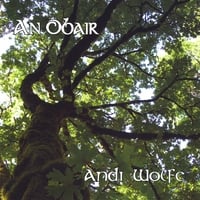 13 February 2009 - Xishuangbanna Tropical Botanical Garden.
13 February 2009 - Xishuangbanna Tropical Botanical Garden.We were given a tour of the museum as part of our program during the first day. The entrance had this living sculpture.

A ficus tree with the stems fused into a vase form. It kind of reminds me of the sculptural project ongoing at John C. Campbell folk school.

There was a large koi pond on either side of the walkway to the entrance as well.

The reception desk is made from an interesting piece of wood. I didn't get to take a close look at it to see what it was, but it reminded me of a strangler fig skeleton.

Here's a relief map of the garden and conservation area.

The first room we visited showed a lot of botanical and zoological specimens from the region, including these very interesting Dipterocarpaceae fruits.

Winged seeds are always of interest to me. I use the textural motif of these kinds of specimens as inspiration in my wood art.

Giant legumes!

Shelf fungi also serve as inspiration for some of my artwork.

The strangler fig remains was beautiful - I think that may be what that reception desk was made from.

One area of the museum was devoted to the Dai people, the largest ethnic minority in the Xishuangbanna region. There was a reconstruction of a Dai house there, which made a good Woodcentral sightings pic.

The low table and short stools is typical of the region.

We didn't have enough time to really explore this room, but it seems as if plants are used for just about everything in the home.

Fish traps and earthenware pots.

Nets and seins for fishing.

A bamboo fish or crab pot?

Lunch pails made from large pieces of bamboo.

I can't remember the name of our guide, but she told us about the Dai water festival. It sounds very colorful. Aside from the splashing, our guide said that the Dai have a tradition of dallyance that I haven't seen described on the web. For three days you are allowed to sleep with whomever you want to and after the festival, everything goes on as if nothing happened. Maybe something's missing in translation?

Pu'er tea comes from this region of China.

Scales

Jugs and pots

A beautiful box

Drop spindles

A Dai loom

One of the Dai patterns

This embroidery pattern is also typical of the Dai people.

A bark cloth suit.

The bark hat that goes with the suit.

This case featured traditional wind instruments. The one in the middle looks almost like a pipe and chanters. It's made from a gourd with bamboo pipes.

Dai candles

Pots

A drum that looks very much like a djembe.

A xylophone

Fireworks made from bamboo sections

A very interesting instrument that reminded me of a zither.
















































